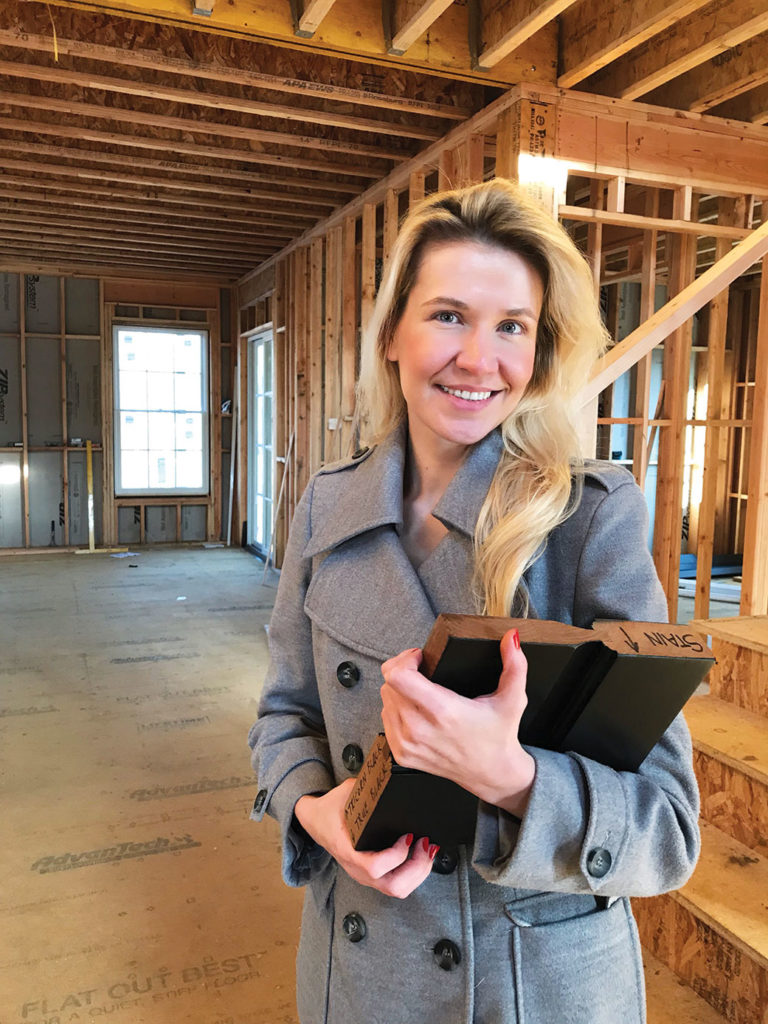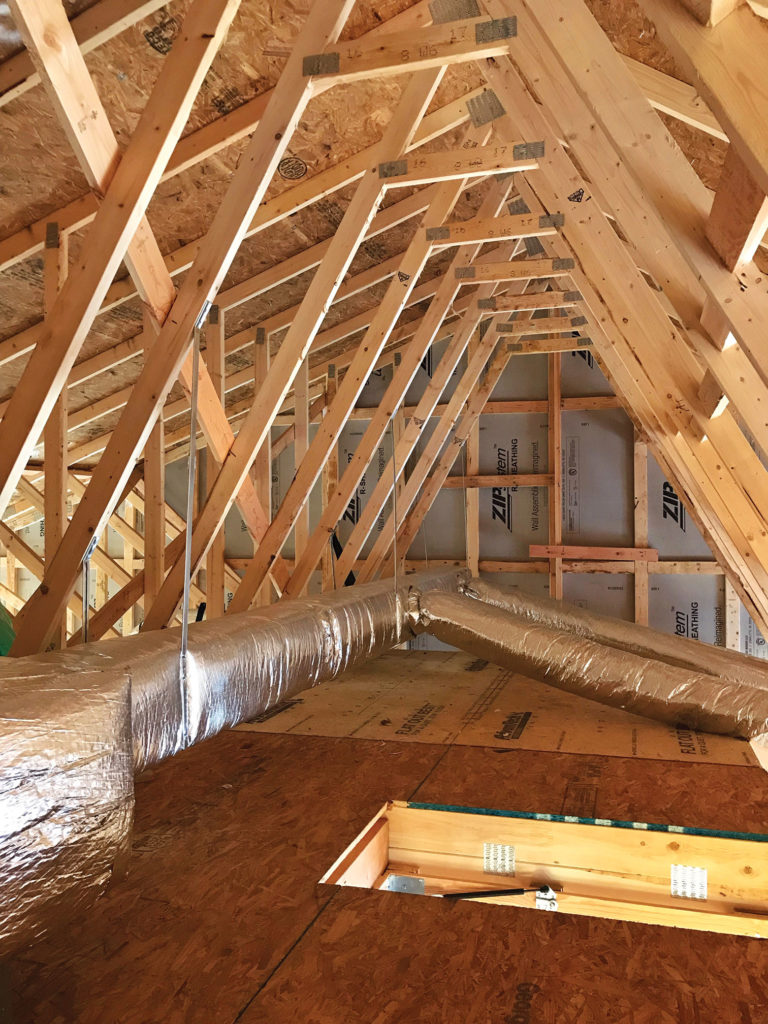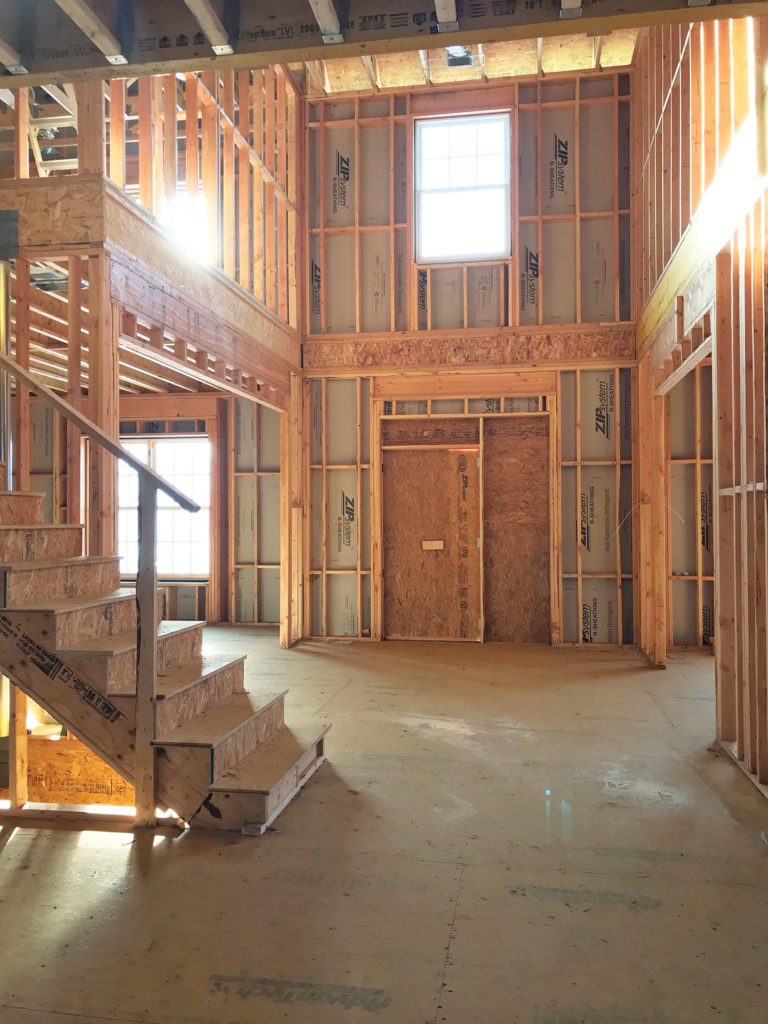Conversations with Kate: Choices for Comfort & Safety
| Photographer Vicky Hopkins | Architect Dan D'Agostino | Interviewer Ren MillerKate Rumson shares her choices for mechanical systems
Kate Rumson has been occupied with some not-so-pretty but oh-so-important aspects of building her new home in central New Jersey. Rumson, founder and creative director of The Real Houses of Instagram (@the_real_houses_of_ig), has been putting much thought into hot water heaters, HVAC systems, fireplaces and generators. Though most of these elements of a home “disappear” from our thoughts once installed, taking time to study the options and make the best choices will help to provide safety, convenience and comfort for years to come. Follow along in this, the third installment in our series of insights into her construction project.
Ren: Did you choose a tank or tankless water heater?
Kate: I decided to go with one of each. I chose a tank hybrid electric water heater because it’s extremely energy efficient (it uses a heat pump to heat water). Hybrid electric technology is fantastic but it has a slower recovery rate so I knew it wouldn’t be ideal for the master bathroom because I love my long showers. So I chose a tankless water heater to service the master and two additional bathrooms for a never-ending supply of hot water.
Ren: HVAC systems are critical to our comfort and health because they provide heating, cooling and ventilation. What type of system will your new home have?
Kate: Choosing a high-quality HVAC system was extremely important to me. Energy efficiency, air quality and reliability were the most important factors so I took my time researching all available options. Trane® was by far the most recommended brand by every HVAC contractor I talked to and, after looking into their systems, I decided to go with their multistage, high-efficiency furnaces and air conditioners. We will also be adding steam humidifiers to ensure the house will have the correct amount of indoor moisture and ERVs (energy recovery ventilators) for fresh-air ventilation.
Ren: Many homes have HVAC systems in the basement, with heating and cooling pumped to the upper floor(s). However, there are options. What did you choose?
Kate: My house has an open floor plan with just a few interior walls on the first floor, so running ducts from the basement to the second floor wouldn’t be possible in all areas, and I would never want to install ducts in exterior walls as that would require removal of insulation. For my floor plan it made the most sense to install two different HVAC zones — one in the basement servicing the first floor and another one in the attic servicing the entire second floor.
Ren: Fireplaces can be highly desirable focal points, but they can also consume a lot of fossil fuel, spread the scent of burning wood to neighbors who may not appreciate it and, depending on placement of the thermostat, leave one room too warm and surrounding rooms too cold. What type of fireplace will your home have?
Kate: There are many options when it comes to fireplaces but most of them didn’t feel right for my lifestyle. Wood-burning fireplaces require too much maintenance, direct-vent gas fireplaces aren’t energy efficient, and electric options do not look like real fire to me so I definitely struggled finding the right fireplace. A few months ago I came across HearthCabinet® fireplaces and knew that would be the perfect option for my new home—they are ventless fireplaces that require no wood, gas or electricity and are powered by clean-burning alcohol gel fuel cartridges. The fireplaces are beautiful, and the cartridges are safe, eco-friendly and easy to use!
Ren: What type of insulation did you choose?
Kate: I chose to go with Rockwool® mineral wool insulation because it offers higher R value per inch compared to fiberglass insulation, as well as exceptional fire resistance and soundproofing. Mineral wool insulation also repels water and is resistant to rot, mold and mildew growth — contributing to a safer indoor environment. It also makes me very happy that bugs and insects don’t like it, so they won’t be trying to find comfort inside my walls!
Ren: With the growing number of serious storms, have you considered installing a whole-house generator in case you lose power?
Kate: After living through Hurricane Sandy without power for almost a week and watching my basement get flooded, I knew I had to have a whole-house generator so that doesn’t happen again. My new house will have well water so having a generator is particularly important as the water pump will not work without electricity. As soon as we started building, I ordered a Champion 14-kW whole-house standby generator — they are the quietest and most reliable generators on the market. Even if I never have to use it, I will sleep better at night knowing I have that layer of protection in place.



